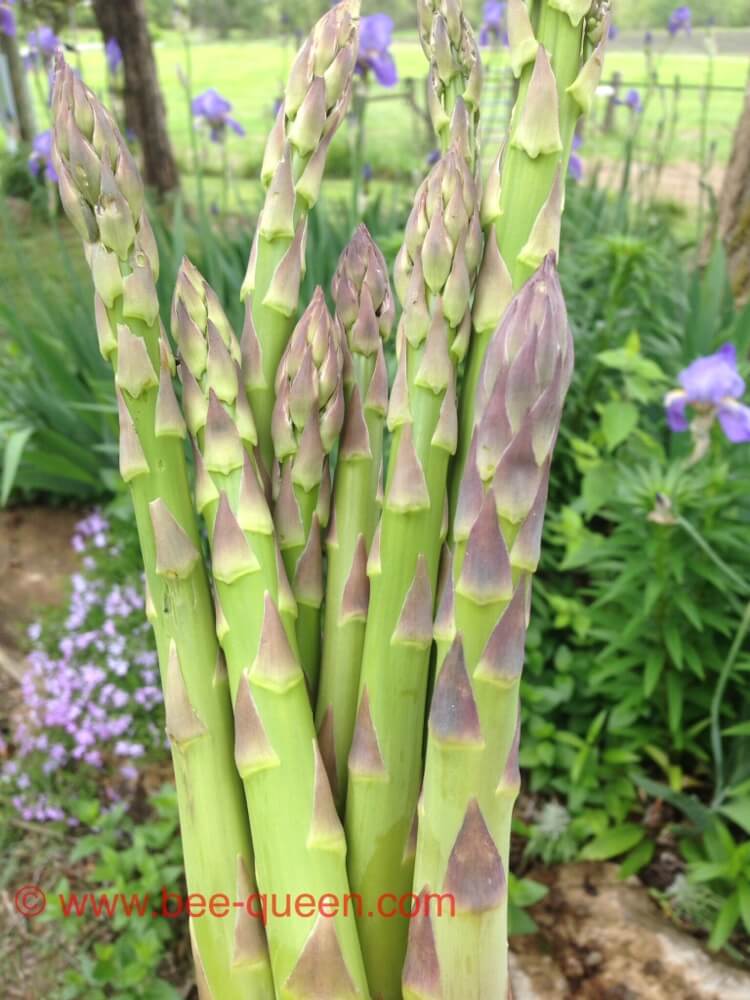
Do you love the taste of fresh asparagus? I certainly do. Nothing makes me happier than to see those chubby green stalks poking up out of the soil after a long winter. I readily admit that not many of those early arrivals make it back to the house. What can I say, I love munching my way through the garden.
Patience is a virtue when growing asparagus. Asparagus crowns can be planted in early Spring and do best when planted in raised beds. For the first year you should not harvest (or harvest only a couple of stalks from the whole bed if they are plentiful). In the second year, follow a 1/3 – 2/3 rule where a grouping of three yields only one and the rest of the stalks are allowed to grow tall and display their feathery green leaves. Let me tell you, the temptation to take more is hard to resist. From the third year on, your patience will be rewarded with an asparagus harvest each Spring for the next twenty years. Our asparagus bed has finally hit its stride and I have been eating asparagus with unfettered abandon, following a 2/3-1/3 rule.
Roasted or grilled, lightly coated with oive oil, sea salt, and cracked black pepper is a simple way to enjoy the slightly nutty taste. I love to incorporate it into any and all recipes. My favorite this year was a combination of fresh asparagus and morels. Absolutely delicious!! But, even I can get enough of a good thing so I think of ways to preserve the deliciousness that is Spring asparagus!
As usual, I turned to my old faithful method of putting up vegetables, blanching and vacuum sealing. Correct blanching technigues can prevent the nutrients from leaching out during boiling and preserve that beautiful green color. Rinse the stalks and trim off the woody, fibrous ends. If you are planning to cook the asparagus within the next 24 hours, you can leave the freshly trimmed stalks in a glass filled halfway with water or bundled in the crisper of the refigerator. If you want to freeze the asparagus for later use, you can use the following technique:
Prep your work area. You will need:
Bring the stock pot filled with water to a rolling boil. I like to add a bit of salt to my water, as well. Separate the stalks into small bunches of similar length and add to boiling water. Keep temperature elevated so that water returns to boil rapidly. Set timer as follows.
Remove stalks according to above times into colander and immediately place into ice bath for several minutes until cool.
Place on your drying area and pat dry before sealing.
Vacuum seal according to manufacturers directions in single layer and freeze immediately
Now you can enjoy asparagus in all it’s glory well into Fall and Winter. (0r hopefully, at least till the end of Summer!)